23 top marketing tips from business leaders on The CMO Show podcast
Sometimes the best way to move forward is, ironically, by looking backwards. What lessons can we learn from our peers who’ve been there, done that?
That question is one of many I’ve asked while hosting more than 100 interviews with marketing and communications professionals since The CMO Show podcast began in 2015.
As the year’s activities gather speed, the team and I took a moment to study the transcripts. We wondered what patterns could we discover? What recurring themes help us better understand CMOs? What if there was just one place where we brought all these ideas together?
This article is the first step in sharing the results of that work. We’ve carefully selected 23 episodes of the podcast, summarised the conversation and the key takeaways.
Here’s how I’d summarise the insights from all these amazing people - marketing leaders are creative problem solvers. It’s a bit like one of those ‘Choose Your Own Adventure’ books - there are many paths we can take in this business, and each person creatively decides how to choose the best one.
I love that aspect of this profession and it’s a privilege to have heard from so many talented people. Dig in, enjoy, and make sure you put these ideas to work.
#1 To be creative, be open
Angie Tutt - Head of Marketing, Lego Australia
Almost anyone can replicate a product, but what they can't replicate is your culture, your creative thinking and your ideation. Creativity can be a difficult thing to generate, and even harder to find time for. Angie Tutt, Head of Marketing at Lego Australia has identified some of the best practices that she and her team use to foster creativity. Angie places value on having a transparent company, where the in-house culture is open, inclusive and and preserves a space for creativity to be nurtured and grown.
Takeaway: Consider taking just 5% of your day to think differently. Whether that be sitting outside and observing someone, simplifying the story you are telling to appeal to an audience, or even undertaking further research on your market and using that as your creative source.

#2 Empathy counts
Alexander Meyer - Chief Marketing Officer, the ICONIC
Marketing is all about understanding your audience but Alexander Meyer, CMO at The ICONIC, takes it one step further envisioning himself in the business of creating identities.
With its three-hour delivery program, The ICONIC plays a vital role in delivering a piece of someone's identity to them on demand. Alexander focuses on the customer, using empathy maps to identify customer inputs and ideation to create connection within a marketing strategy.
Takeaway: Harness empathy to really see things from your customer’s perspective, and adopt the mantra of ‘progress over perfection’ to begin to optimise their experience.
#3 Deepen the relationship to build retention
Anne Johnston - Chief Marketing and Fundraising Officer, Children’s Cancer Institute
Unfortunately nobody wakes up every morning feeling obliged to give to a charity. According to Anne Johnston, Chief Marketing & Fundraising Officer at CCI, the key to fundraising for an important cause is investing in building strong, long-term relationships with supporters.
CCI is busy cultivating that relationship and ensuring donors know they’re vital and actually part of the team. Children’s stories are important, but transparency is also a large piece of the puzzle, with lab tours and clinical trial results demonstrating how donations contribute to the science of ending childhood cancer.
Takeaway: Find the supporters that really care about your purpose, and create the kind of journey for them that means they’re with you for a lifetime.
#4 Layer campaigns to reach a larger audience
Renee Gangemi - Head of Marketing, TEDxSydney
When you’re in the business of ideas every part of the business needs to understand storytelling. Tapping into the heart and the head, it’s a challenge to market to people on a personal and professional level. But Renee Gangemi, Head of Marketing at TEDxSydney, sees this as an opportunity to layer campaigns in both a B2B and B2C format. Looking to promote the value of going on a conceptual journey rather than jumping to the end point, the team markets the backgrounds of speakers in a grassroots campaign to spark personal connection and leverages TED brand equity to generate B2B partnerships.
TEDxSydney ensures it connects with its audience throughout the year with ideas and staged offerings so that they’ve ‘bought in’ way before it’s time to purchase tickets. Overall, this layered campaign strategy has resulted in higher ticket sales and higher engagement with social and digital content.
Takeaway: Connect with and cultivate buy-in from audiences well in advance of treating them as a customer.
#5 Look back to go forward
Adriane McDermott - Chief Marketing Officer, Seafolly
Being a brand leader in a very competitive market can be a powerful position, especially as a global brand. But how do you maintain that leadership role and stay ahead of your competition? Adriane McDermott, CMO at Seafolly, has broken down the formula and set out to recraft the brand’s identity as a consistent leader in the market.
Seafolly went back to the DNA of its brand to rediscover its heritage and brand truth, understand its audience and ultimately retain its status in the market. Its recent brand campaign: ‘Own Your Folly’ drew on its origin story and encouraged women to embrace the freedom to enjoy moments of ‘folly’.
Takeaway: Invest in your brand narrative by connecting with heritage, brand truth and audience insights.
“I think it’s really important that you are passionate about what you’re doing, convincing other people it’s the right thing to do. You’ve got to really stand by the work, and be the champion of the work inside the organisation.”
Brent Smart, Chief Marketing Officer at Insurance Australia Group
#6 Brand building for impact
David Ohana - Chief of Brand Building, UNICEF
Shaping a brand identity in the not-for-profit sector can be a creative and logistical challenge. David Ohana, Chief of Brand Building at UNICEF, has a unique brand and marketing strategy that is creating real change and impact.
David and his team are executing a master plan that involves identifying other organisations that are doing similar work, partnering with a macro influencer and leveraging a UN-money-can't-buy experience. This strategy has raised awareness, allowed real social change projects to be funded, and gone above and beyond project expectations - all while solidifying the UNICEF brand.
Takeaway: In today’s society, brands that aren't embracing a corporate social responsibility (CSR) mentality will end up on the wrong side of history. Build on partnerships to create real social impact.
#7 Tell a story that resonates with a greater audience
Julie & Colin Angus - Co-Founders, Open Ocean Robotics
When establishing a business, finding the right sponsors and investors to back you is vital. For Julie and Colin, Co-Founders of Open Ocean Robotics and National Geographic Adventurers, harnessing the power of storytelling was key to getting stakeholders on board.
The duo embark on scientific expeditions, connecting the sense of adventure to their personal brand and the organisation’s brand through their books and documentaries. Audience reach is a deciding factor in prioritising expeditions, and they partner with sponsors and companies who align with their values for mutual benefit and amplification.
Takeaway: Consider how tapping into the hero’s journey can strengthen your audience’s emotional connection to your brand.
#8 Cause marketing for global impact
Yves Calmette - Chief Marketing Officer, World Wide Fund for Nature
How does an organisation convince the world that the time to act is now? To influence an audience, Yves Calmette, Chief Marketing Officer at World Wide Fund for Nature (WWF), says finding an effective way to connect with people on a personal level is an imperative. As soon as the motivation becomes personal, organisations can start to shift beliefs and behaviours.
By shifting emphasis from deforestation as an issue in one campaign to the impact it has on a beloved Aussie icon - the koala - WWF found Australians responded differently. And with more emotion. One small change had people joining WWF, donating to WWF, and weighing up party policies on deforestation.
Takeaway: Identify and create belief moments for your audience to shift awareness and reconsider views.
#9 The more people are connected, the more they want to disconnect
Mohit Bhargava - General Manager, Sales & Marketing, Big4 Holiday Parks
You can’t trade on nostalgia forever, and well-loved brands need to tap into some fundamental truths if they want to evolve and future-proof the business. Mohit Bhargava, General Manager Sales and Marketing for Big4 Holiday Parks, has reshaped the definition of an Aussie family holiday by understanding their desire to both connect and disconnect.
Fundamentally, the definition of ‘family’ is changing and evolving, but one insight that remains is that the more people are connected, the more they want to disconnect. An updated strategy saw Big4 Holiday Parks creating authentic Australian holiday experiences for diverse family types that fulfil the desire to disconnect.
Takeaway: Step up to the challenge of evolving a business in line with the expectations of your audience by creating a compelling customer experience people want to come back to.
#10 It’s liberating being able to say yes to big ideas
Brent Smart - Chief Marketing Officer, Insurance Australia Group
It’s getting harder to buy attention and these days it takes more than a big budget to generate brand visibility. Playing it safe in the marketing industry can perhaps be a bigger risk than producing an outrageous campaign according to Insurance Australia Group’s CMO, Brent Smart.
Being brave in marketing can be one of the hardest decisions, but in today's culture doing something creative and relevant has never been more important. A highlight has been working with NRMA to develop its powerful idea of providing help to those who need it most. Doing the unexpected and turning up at Christmas time with a heartwarming, “Drive safe, everyone”, message has been a way of connecting deeply at an emotional time.
Takeaway: If you’ve got a great idea, fight for it. That might just be the most responsible thing to do with your marketing budget.
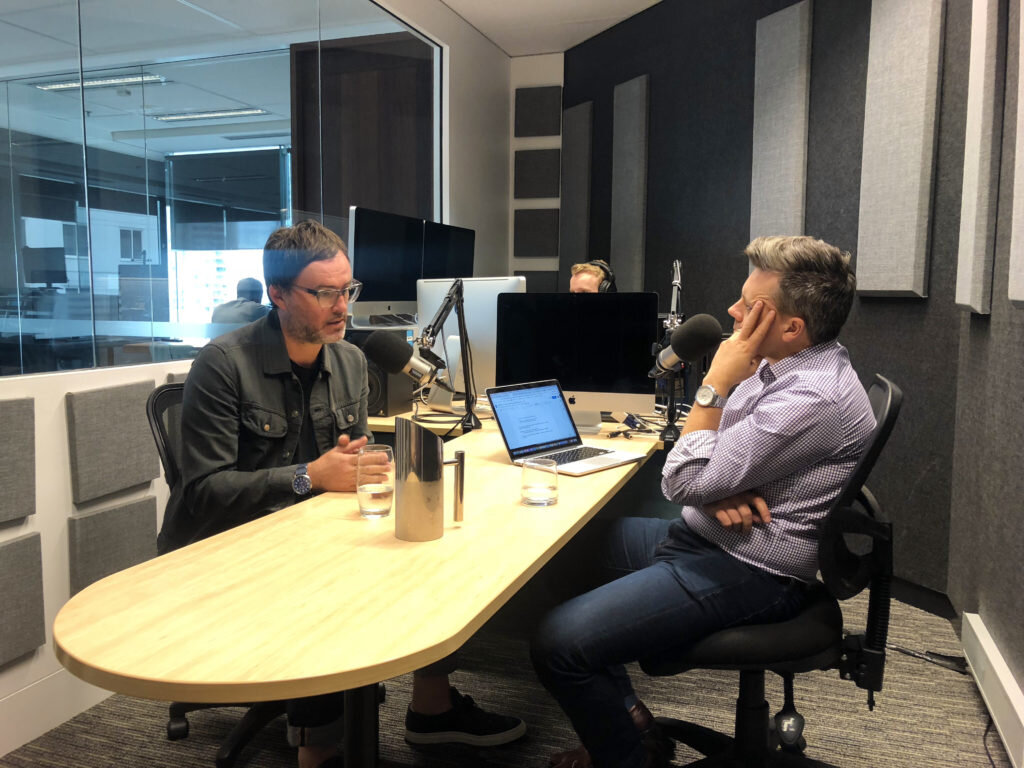
#11 Engage your audience for a lifetime
David Breust - Chief Marketing Officer, Chartered Accountants Australia & New Zealand
All marketers have the same job: to engage and attract customers. Membership organisations need to go further to inspire individuals to subscribe, pay and commit to long-term activities. In a “cradle to grave” relationship, relevance and importance are two critical success factors for communication.
Chartered Accountants Australia & New Zealand (CA ANZ) has a drive to personalise marketing to a highly complex audience with diverse needs and thresholds, so the challenge is then to find cohesion of messaging. Its aspirational “Difference Maker” campaign is one that resonates across ages, skill levels, stages of career and development needs.
Takeaway: Tap into an aspirational and inspiring message that encompasses your brand vision and can be personalised to audience segments.
#12 Demonstrate your shared values
Jane Power - Former Chief Customer and Marketing Officer, Bupa Australia & New Zealand
A primary challenge for marketers is to discover what is the value that will be most appreciated by our brand, our consumers and our stakeholders. Once you’ve locked that down, how do you shape value in a way that creates longevity and raises brand awareness? For Bupa Australia and New Zealand, Jane Power explains that this insurance business actually thinks about itself as a health and care company. This marketing platform of ‘care’ led to the launch of its “Life is a gift, take care of it” campaign. Jane says storytelling demonstrating this care in action was an integral part in getting the message to connect with customers, both new and old.
Takeaway: Once you’ve found a platform that resonates with what your customers value most about your service, bring it to life through stories that are primarily told through your people or your customers.
#13 Build authentic connections in the age of the influencer
Jim Louderback - GM & SVP, VidCon
Jim Louderback, GM and Senior Vice President for VidCon, has been on the ground for the many cycles of technological disruption in the media industry, including the dotcom crash in 2000. It’s safe to say he’s learned a thing or two about how organisations can weather new trends and technologies and harness them to grow. Jim sat down with Mark Jones in June to discuss the rise of online content creators and the best way for brands to partner with them.
The key to partnering with content creators is a change in perspective. Instead of thinking about how they can adapt to your brand’s message, you should be looking at how their content, its style and aesthetic, can bring it to life in an authentic way.
Takeaway: Finding creators who really identify with what your brand is trying to accomplish (think beyond sales!) is key to successful influencer relationships.
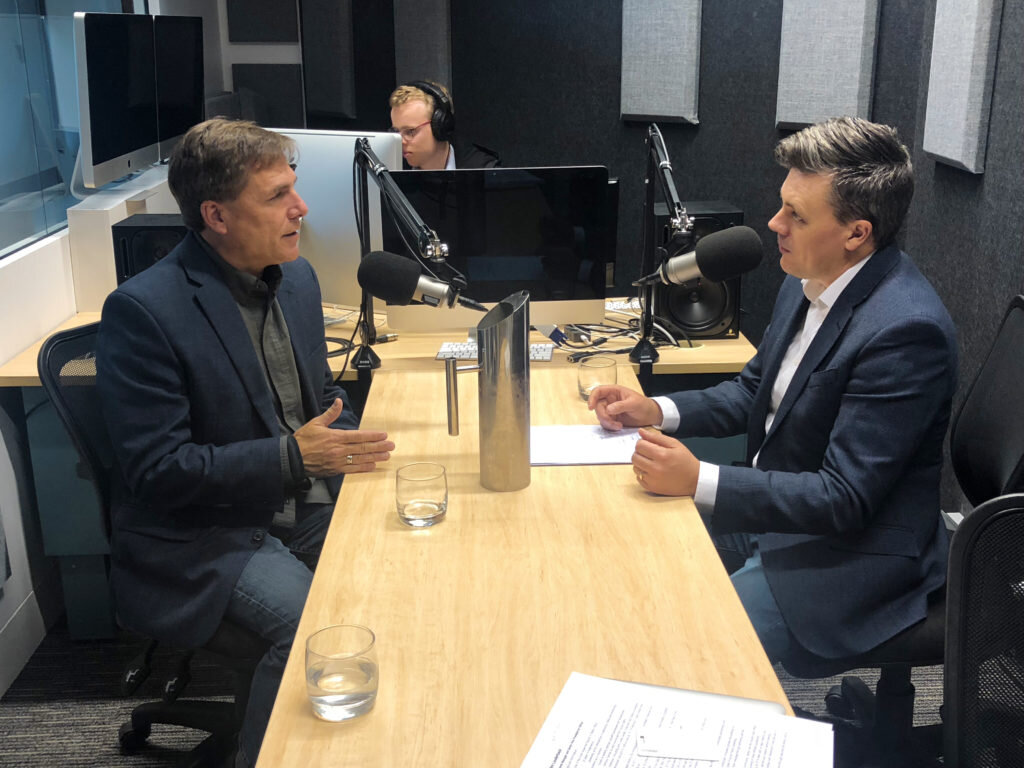
#14 Purpose is the nucleus of good marketing
Ric Navarro - Former Global Director Marketing and Communications, Norman Disney and Young
Do you ever get the feeling that your customers don’t really get you? The way you’re speaking to them could be the problem. Ric Navarro, former Global Director of Marketing & Communications for Norman Disney and Young, spoke with Mark Jones about how we break down the artificial nature of marketing dialogue in favour of forming genuine human connections with customers.
Connecting with customers should be the primary focus for any marketer, but your strategy also has to support your business objectives and appease the board by delivering ROI. The two objectives don’t always align.
Takeaway: Establishing a clear brand purpose that resonates with your customers and internal stakeholders will create a strong foundation for developing campaigns that do the same.
#15 The case for sticking to what you do well
Neil Ridgeway - CMO, Rip Curl International
Neil Ridgway, CMO Rip Curl International, says that staying true to your brand and knowing your customer is the best technique for riding the waves of innovation and disruption. Nobody likes a brand stuck in its ways, discovery is something to embrace.
As the great Kelly Slater once said, “I don't want to change from who I am, but I've always wanted to become more aware of what life is all about.” When it comes to change and innovation, brands get into trouble when they don't stick to what they do well, and let the change influence who they are.
Takeaway: Rip Curl’s endurance is proof that when you have a strong and identifiable brand you have a very solid blueprint for implementing change and innovation around it.
#16 Run at the speed of culture
Serena Leith - Chief Marketing Officer, Spotify Australia & New Zealand
Spotify’s Director of Marketing for Asia-Pacific, Serena Leith, answers the question: In an age of customer experience, how do you nail the tone that reflects the zeitgeist and moves the conversation forward? A flat company hierarchy means ideas can move quickly to market. Alternatively they can just as quickly be given the thumbs-down by the diverse members of the team, who are broadly representative of local consumers.
“Because we are a live time platform we get instant feedback on anything that we do. From a UX, from a product iteration, we’re constantly testing. It’s like doing live comedy, really. We either get applause, or the room goes dead.”
Takeaway: Businesses need a diverse team that understands the current hot topics or cultural conversations that your brand needs to either be part of, lead or confront.
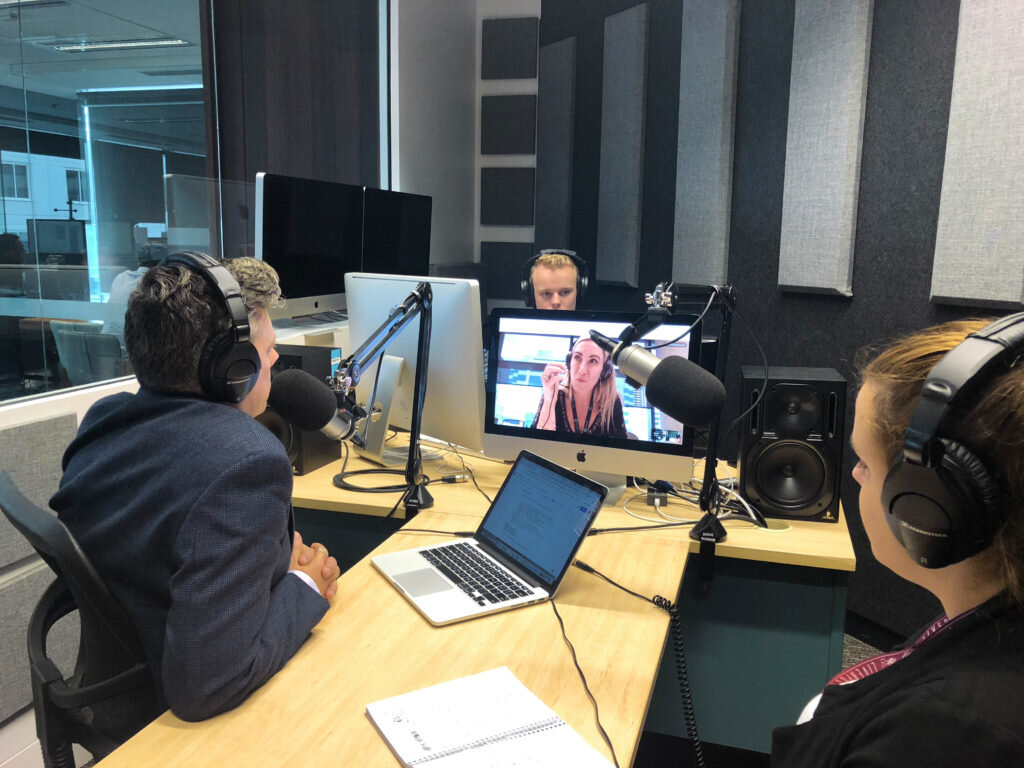
#17 Discover the unique recipe for prosperous client-agency partnerships
The CMO Show roundtable
Jonathan Crossfield - Editor at CCO Magazine
Louise Eyres - CMO at Sport Australia
Mark Jones - Host of The CMO Show
Andrew Davis - Keynote Speaker & Author
In a CMO Show first, we held a panel discussion to take an in-depth look at the relationship between clients and agencies with marketing experts from both sides of the equation. A prosperous client-agency dynamic can be a tricky one to master, so how do you strike an effective balance between drawing out the right answers from clients and calling the shots?
Ultimately, agencies that know their strengths and their niche have the confidence and capability to advise and deliver great value. When your relationship moves beyond master-servant to one of trusted partnership, this unlocks value at another level altogether.
Takeaway: Clients bring agencies on board to solve one overarching business problem: How do we sell more of what we sell? Agencies need to always assume that is what we are here to do, and clients need to ensure agency partners work collaboratively to solve that.

#18 Beat market saturation with focus
Teresa Sperti - Former Chief Marketing, Data and Product Officer, World Vision
The NFP sector is facing significant disruption. Disintermediation (cutting out the middle 'man') is making it easier for consumers to donate directly to causes, and there is a growing need for NFPs to change in order to achieve cut-through in a saturated market. Teresa Sperti, former Chief Marketing, Data and Product Officer at World Vision Australia, joined Mark to discuss the changing landscape of the not-for-profit sector, how internal evolution can help NFP brands weather disruption, and the power of emotive storytelling in charity marketing.
Takeaway: Internal enterprise transformation is key to external success. Focus on refining the enablement layer in your organisation: data and insight, technology, people and process.
#19 Science + Storytelling = Success
Tamara Howe - Marketing Director ANZ, Kellogg Company
In the shiny new age of digital marketing and trendy tech companies the FMCG industry can sometimes feel a bit old hat, but not for Tamara Howe, Marketing Director ANZ at Kellogg Company. Tamara dropped by The CMO Show LIVE (our biannual networking breakfast event) to share her insights on how, for a brand like Kelloggs, science-backed storytelling is a formula for growth in the sector.
With more choice in the market than ever before, Tamara says the power of storytelling is important for deriving an emotional response from your target audience, but brave new ideas need to be backed up by the necessary research.
Takeaway: Combining the best of both worlds – marketing science and emotive storytelling – helps marketers stay ahead in a constantly evolving market. Data informs insight or contextual relevance, and creativity helps us to execute exciting and ‘brave’ campaigns.
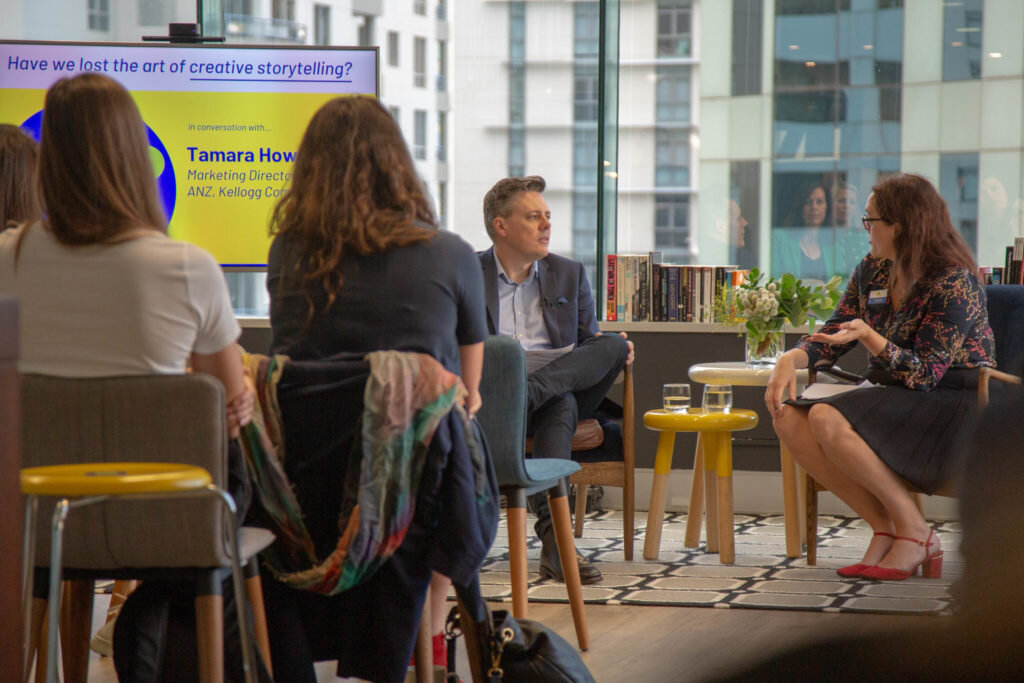
#20 Move beyond The Power of One
Jessica Ruhfus - CEO, Collabosaurus
What do Lennon/McCartney, Cronuts and The Avengers all have in common? They all bring different things together to deliver something awesome. The power of good collaboration is what drives Jessica Ruhfus, Founder and CEO of marketing tool Collabosaurus.
“[Collaborative marketing is] one of the most powerful ways to reach new audiences. When two businesses come together and collaborate on something, whether that be a product or an event or a social media campaign, they’re essentially doubling their reach in the process."
Takeaway: Striking the right ratio of non-promotional content to calls-to-action is paramount. On social media, Instagram in particular, the ratio should be three gives to one ask.
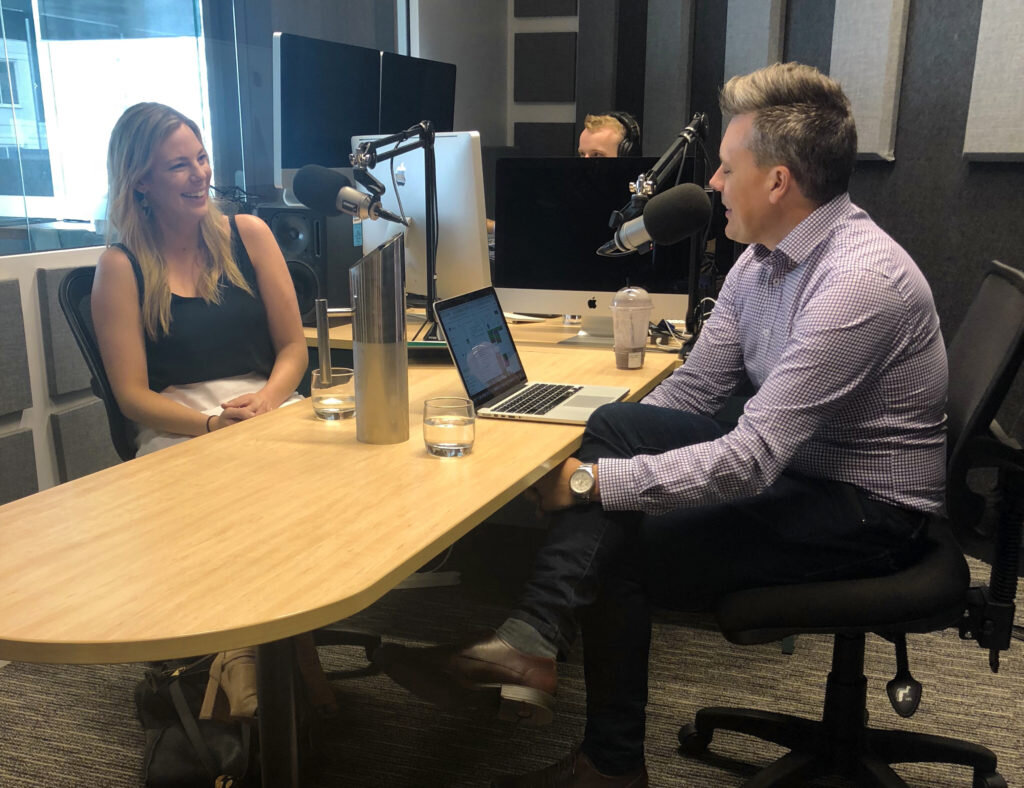
#21 Fear is powerful - use it wisely
Chris Taylor - CMO, The Heart Foundation
One glance at all the true crime podcasts creeping up the iTunes chart is enough to tell you we humans have an appetite for the macabre. When Chris Taylor, CMO at the Heart Foundation, tapped into that morbid curiosity for the charity’s Australia’s Biggest Serial Killer campaign, the results were enormously effective. Popular with the marketing profession, successful in market and effective in its ultimate goal, this campaign saved lives. Accolades are all well and good, but the campaign actually resulted in change and secured Medicare-funded heart health checks.
Takeaway: Fear affords marketers a lot of angles, but many of them have been explored to death. The cultural zeitgeist is continually offering up fresh ways to explore fear as a concept. Razor sharp marketers should keep an ear to the ground.
#22 Scientific knowledge is always changing, so you must too
Peter Hammer - Managing Director, Marketing Scientist Group
For the longest time, the idea of science-backed marketing may have seemed like a bit of a paradox, given the discipline’s traditionally creative roots. On this episode of The CMO Show, Peter Hammer, Managing Director of Marketing Scientist Group, asks whether in an era of constant data and fierce competition, marketers can really afford to ignore the numbers in favour of feelings? He explains that marketing science is ultimately about trying to help us understand how marketing works, how brands grow and how customers make purchasing decisions. It can provide invaluable insights that we would have never discovered otherwise.
Takeaway: When growing your brand, most marketers will focus on high-value customers that buy from them often, but research shows this isn’t the best approach. Instead, brands should be focusing on the light or infrequent customers of the category.
#23 The ability to build relationships is a marketer’s superpower
Foreign exchange and payments company, OFX is a true-blue Aussie success story. So what sets them apart? According to CMO Rebecca Shears, it’s all about finding the perfect balance between digital and human interaction, and engendering trust with your online customers is one way to bridge the gap.
“Obviously content marketing is not around your own brand. If you’re at a party, if someone just talks about themselves you’ve got to walk away. So you’re going to talk about a conversation that they’re interested in,” she says.
Takeaway: For many customers, a relatable piece of content marketing is far preferable to an advertisement. Understand what appeals to your different audience demographics and adjust your marketing methods to suit them.
